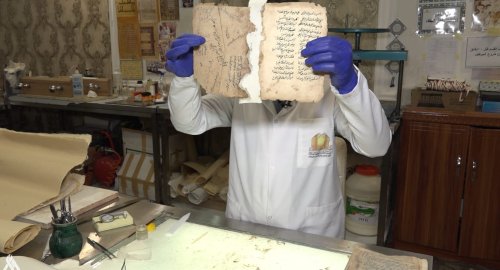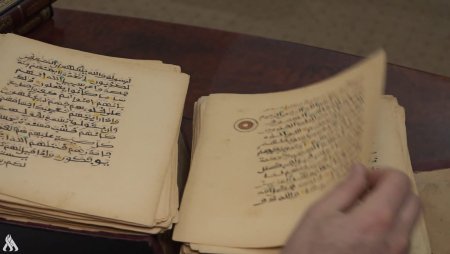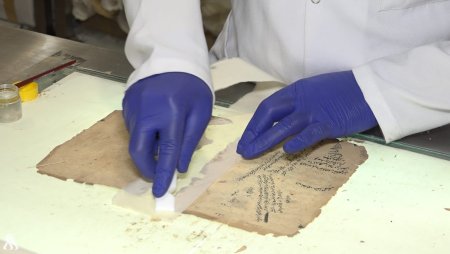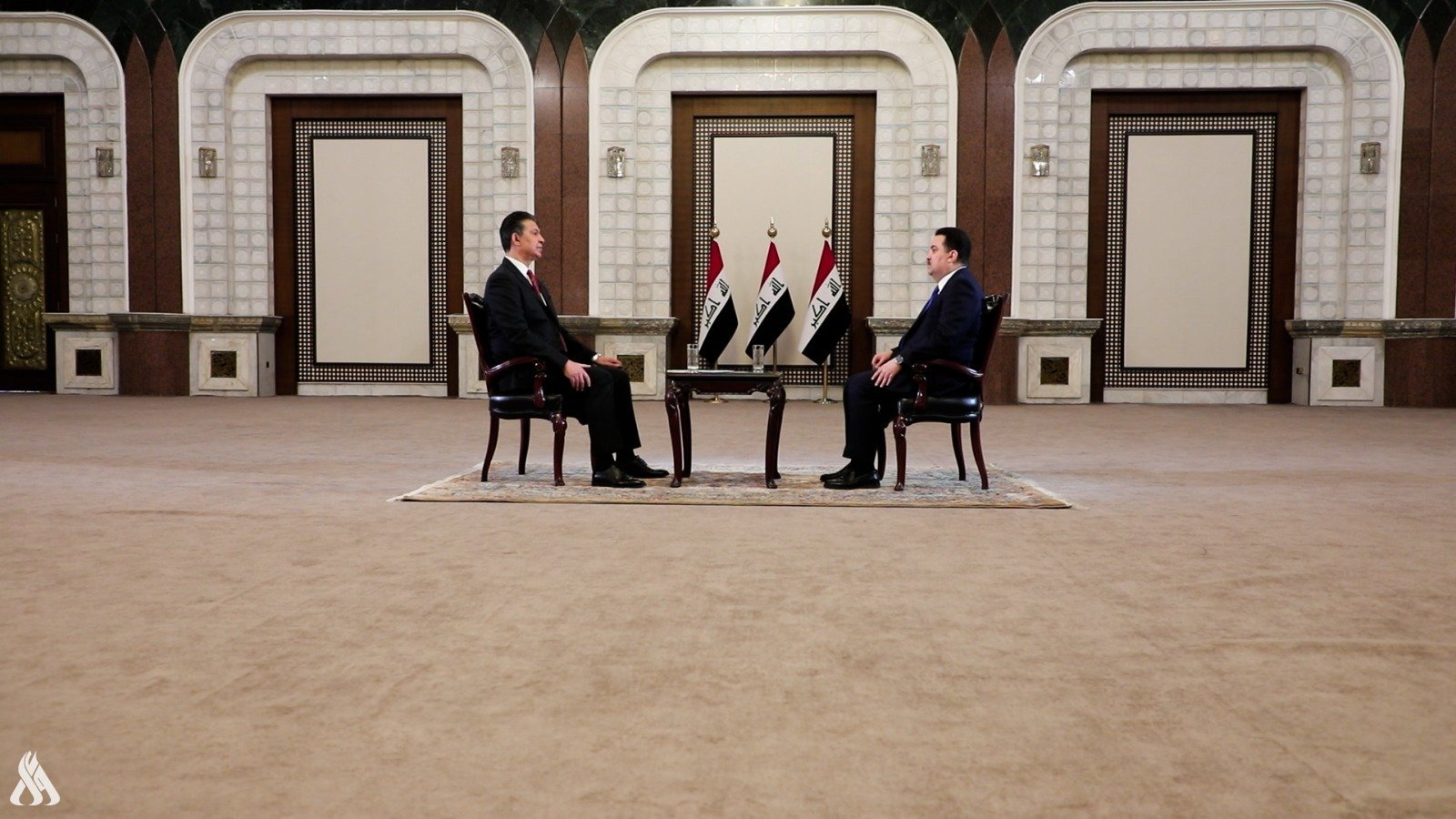
The discovery of rare manuscripts dating back to the first Hijri centuries in Najaf

- 13-05-2022, 20:28
Najaf - INA
Haider Farman
Kashif Al-Gita Foundation in Najaf Governorate is teeming with tens of thousands of rare manuscripts dating back to the first Hijri centuries.
There is a copy of the Qur’an dating back to the Andalusian era, and many ancient valuables that are considered a legacy in the Najaf libraries, including the library of the Kashif Al-Gitafa Foundation, which houses thousands of jurisprudential, intellectual and historical books, as well as rare manuscripts dating back about 900 years.

The library contains, the Iraqi News Agency (INA) surveyed, during a visit to the institution’s library, this great legacy, as the director of the Manuscripts Restoration Department, Reda Hassoun, said: “The Manuscripts Restoration and Conservation Department is one of the important departments in the institution, And that the department's work is to index the manuscript in a form upon its arrival, in order to identify the damage it sustained and how to restore it."

He added, "As for the next step, it is to repair the damage to the manuscripts by changing the cover skin of the manuscript or the paper, after which the manuscripts are sent for storage," noting that "the missing parts remain missing, and if they are written, they are considered forgeries, because the department only restores the damaged parts." As for the line, it cannot be processed."

Hassoun stressed, "The oldest manuscript in the library of the Kashif Al-Ghita Foundation is the Kitab Al-Isdar manuscript, and it extends to 900 years, while there are other manuscripts also that are 500 and 600 years old," explaining that "the stages of restoration of manuscripts begin with cleaning the manuscript from dust, sterilizing it and bringing paper. The manuscript, which must be homogeneous with the manuscript paper itself, while the thickness of the paper must be identical to the thickness of the manuscript,” noting that “after the restoration process, a special glue of cellulose fibers is used, and the manuscript is sewed in the form of a lieutenant, and then “Shirazah” works.
That “this institution is one of the important Najaf institutions, and it includes many departments, including the Manuscript Relics Department, which adopts the collection, preservation, documentation, restoration and publication of ancient manuscripts that are considered rare books written by former scholars,” noting that “the institution’s library It also includes important scientific materials, and that the Foundation was keen to take care of the manuscripts through the Manuscripts Restoration and Maintenance Department."
He continued, "The Foundation includes in its shelves three types of books, the printed books that researchers benefit from, and there is a kind of stone books that are printed on stone tablets and are considered important copies, and the third and most important section is the manuscripts."
He pointed out that "the manuscript "Al-Istisar" by Sheikh al-Tusi, who lived in the sixth century AH, is one of the rarest manuscripts in the library, and it is a manuscript with few words in dots, while there is a copy of the Holy Qur'an dating back to the Andalusian era," noting that "there are many beautiful manuscripts in The calligraphy and the abundance of scientific material in this library.
The Foundation's media official confirmed that "many books and manuscripts of the Foundation's library are still unrealized," calling on "researchers of graduate studies to take the initiative in realizing these books and benefiting from them." He noted that ".
Trump: I will stop the chaos in the Middle East and the war in Ukraine
- International
- 10:07
US Central Command: We killed ISIS terrorist leader Abu Yusuf in Syria
- International
- 24/12/20
Liverpool compete with Real Madrid to sign Olympique Lyonnais star
- Security
- 24/12/19
ISC, ADX discuss Strengthening Economic Ties
- Economy
- 24/12/16
Iraq assumes presidency of Arab Investment Company’s Executive Board
- Economy
- 24/12/17












